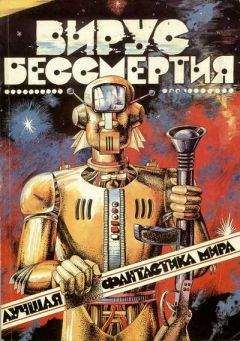159. J. von Lang (ed.) Das Eichtnann-Protokoll: Tonbandaufzeichnungen der israelischen Verhörer (Berlin, 1982), pp. 69, 86.
160. M. Roseman The Villa, the Lake, the Meeting: Wannsee and the Final Solution (London, 2002), chs 3–4.
161. F. Genoud (ed.) The Testament of Adolf Hitler: the Hitler-Bormann Documents (London, 1961), pp. 51–2, entry for
13 February 1945.
162. Hitler, Mein Kampf, p. 403.
163. Weitz ‘Racial Polities’, p. 23.
164. Pohl, Ethnic Cleansing, pp. 2–3.
165. Breitman ‘Himmler and the “Terrible Secret”’, p. 234.
166. M. I. Koval The Nazi Genocide of the Jews and the Ukrainian Population 1941–1944’, in Gitelman, Bitter Legacy, pp. 52–3.
167. K. Slepyan The Soviet Partisan Movement and the Holocaust’, Holocaust and Genocide Studies, 14 (2000), pp. 2–6.
168. Z. Gitelman ‘Soviet Reactions to the Holocaust 1945–1991’, in L. Dobroszycki and J. Gurock (eds) The Holocaust in the Soviet Union: Studies and Sources on the Destruction of the Jews in Nazi-Occupied Territories of the USSR 1941–1945 (New York, 1993), pp. 3, 13–18.
1. V. Grossman Life and Fate (London, 1985), p. 23.
2. A. Kilian Einzuweisen zur völligen Isolierung NKWD-Speziallager Mühlberg/Elbe 1945–1948 (Leipzig, 1993), pp. 79 ff.
3. Kilian, NKWD-Speziallager Mühlberg/Elbe, p. 7.
4. N. Tumarkin The Living and the Dead: the Rise and Fall of the Cult of World War II in Russia (New York, 1994), pp. 113–15.
5. M. Jakobsen Origins of the Gulag: the Soviet Prison Camp System 1917–1934 (London, 1993), pp. 17–41.
6. Jakobsen, Origins of the Gulag, pp. 112–14; R. Stettner ‘Archipel GULag’: Stalins Zwangslager – Terrorinstrument und Wirtschaftsgigant (Paderborn, 1996), pp. 66–76; G. M. Ivanova Labor Camp Socialism: the Gulag in the Soviet Totalitarian System (New York, 2000), pp. 13–15. In 1921 there were approximately 50,000 prisoners in Cheka camps. See too A. Applebaum Gulag: a History of the Soviet Camps (London, 2003), chs 1–2.
7. Jakobsen, Origins of the Gulag, pp. 69, 91.
8. Jakobsen, Origins of the Gulag, pp. 125–6; J. Pohl The Stalinist Penal System (Jefferson, NC, 1997), p. 12.
9. U. Parvilahti Beria’s Gardens: Ten Years’ Captivity in Russia and Siberia (London, 1959), p. 94.
10. Jakobsen, Origins of the Gulag, pp. 119–21; Stettner, ‘Archipel GULag’, pp. 76–87; M. Flores and F. Gori (eds) GULag: il sistema dei lager in URSS (Milan, 1999), pp. 25–6.
11. Pohl, Stalinist Penal System, pp. 14–15; Ivanova, Labor Camp Socialism, pp. 23–5.
12. K. Drobisch and G. Wieland System der NS-Konzentrationslager 1933–1939 (Berlin, 1993), pp. 16–18.
13. Drobisch and Wieland, NS-Konzentrationslager, p. 16.
14. G. Schwarz Die nationalsozialistischen Lager (Frankfurt am Main, 1990), pp. 139–41, who counts 59 camps set up in 1933 and
1934; J. Tuchel ‘Dimensionen des Terrors: Funktionen der Konzentrationslager in Deutschland 1933–1945’, in D. Dahlmann and G. Hirschfeld (eds) Lager, Zwangsarbiet, Vertreibung und Deportation (Essen, 1999), pp. 374, 383; Drobisch and Wieland, NS-Konzentrationslager, pp. 73–5.
15. Eicke in J. Tuchel (ed.) Die Inspektion der Konzentrationslager 1938–1945: Eine Dokumentation (Berlin, 1994), pp. 36–7, ‘Disziplinar-und Strafordnung für das Gefangenenlager’, 1 August 1934; Drobisch and Wieland, NS-Konzentrationslager, pp. 98–9; W. Sofsky The Order of Terror: The Concentration Camp (Princeton, NJ, 1997), pp. 31–2. On Eicke see C. W. Sydnor Soldiers of Destruction: The SS Death’s Head Division, 1933–1945 (Princeton, NJ, 1977), pp. 3–13.
16. Tuchel, Inspektion der Konzentrationslager, p. 34; Sofsky, Order of Terror, pp. 30–31.
17. Tuchel, Inspektion der Konzentrationslager, p. 40; Drobisch and Wieland, NS-Konzentrationslager, pp. 186–91; Tuchel, ‘Dimensionen des Terrors’, p. 379.
18. F. Pingel Häftlinge unter SS-Herrseh aft: Widerstand, Selbstbehauptung und Vernichtung im Konzentrationslager (Hamburg, 1978), pp. 39–40.
19. Pingel, Häftlinge unter SS-Herrschaft, p. 62.
20. H. Kaienberg ‘Vernichtung durch Arbeit’: Der Fall Neuengamme (Bonn, 1990), p. 335 Pingel, Häftlinge unter SS-Herrsch aft, pp. 61–2; K. Orth Das System der nationalsozialistischen Konzentrationslager: Eine politische Organisationsgeschichte (Hamburg, 1999), p. 32.
21. H. Kaienberg Konzentrationslager und deutsche Wirtschaft 1939–1945 (Opladen, 1996), pp. 24–5; Pingel, Häftlinge unter SS-Herrschaft, p. 62.
22. Kaienberg, Konzentrationslager, p. 26.
23. Pingel, Häftlinge unter SS-Herrschaft, pp. 61–2.
24. Orth, Das System der Konzentrationslager, pp. 47–51; on SS economic activities see J. E. Schulte Zwangsarbeit und Vernichtung: Das Wirtschaftsimperium der SS (Paderborn, 2001).
25. W. Kirstein Das Konzentrationslager als Institution totalen Terrors: Das Beispiel des Konzentrationslager Natzweiler (Pfaffenweiler, 1992), pp. 1–33.
26. H. Kaienberg ‘KZ-Haft und Wirtschaftsinteresse: Das Wirtschaftsverwal-tungshauptamt der SS als Leistungszentrale der Konzentrationslager und der SS-Wirtschaft’, in Kaienberg, Konzentrationslager, p. 51.
27. Kirstein, Konzentrationslager Natzweiler, p. 8. The remark was overheard by Rudolf Höss, the future commandant of Auschwitz, who personally killed the fi rst victim of accusations of sabotage, a Junkers aircraft worker who refused to comply with air-raid drill.
28. F. Karay Death Comes in Yellow: Skarzysko-Kamienna Slave Labor Camp (Amsterdam, 1996), pp. 235–46.
29. Schwarz, nationalsozialistischen Lager, p. 86.
30. G. Lotfi KZ der Gestapo: Arbeitserziehungslager im Dritten Reich (Stuttgart, 2000), pp. 114–28, 440–41; Schwarz, nationalsozialistischen Lager, pp. 82–3.
31. R. Kubatzki Zwangsarbeiter-und Kriegsgefangenenlager: Standorte und Topographie in Berlin und im brandenburgischen Umland 1939 bis 194s (Berlin, 2000), p. 250 (the total was 1,175 camps); J. Schiey Nachbar Buchenwald: Die Stadt Weimar und ihr Konzentrationslager 1937–1945 (Cologne, 1999), pp. 139–44.
32. Pingel, Häftlinge unter SS-Herrschaft, pp. 120–21; D. Dwork and R. J. van Pelt Auschwitz: izyo to the Present (New York, 1996), pp. 202–7, 261–3; G. Aly and S. Heim Architects of Annihilation: Auschwitz and the Logic of Destruction (London, 2002), pp. 106–12.
33. Pingel, Häftlinge unter SS-Herrschaft, p. 230; Dwork and van Pelt, Auschwitz, p. 272.
34. E. Kogon, H. Langbein and A. Rückerl (eds) Nazi Mass Murder: a Documentary History of the Use of Poison Gas (New Haven, Conn., 1993), pp. 145–6.
35. Dwork and van Pelt, Auschwitz, p. 299.
36. Schwarz, nationalsozialistischen Lager, p. 211.
37. E. Bacon The Gulag at War: Stalin’s Forced Labour System in the Light of the Archives (London, 1994), pp. 73–6; Ivanova, Labor Camp Socialism, pp. 82–5 for full details of GUlag camp economic organization and output before 1941.
38. Bacon, Gulag at War, pp. 139–44; Ivanova, Labor Camp Socialism, pp. 94–5.
39. Pohl, Stalinist Penal System, p. 16.
40. Bacon, Gulag at War, pp. 142–3.
41. Pohl, Stalinist Penal System, p. 17.
42. Stettner, ‘Archipel GULag’, pp. 181, 205–6.
43. Stettner, ‘Archipel GULag’, pp. 203–4; Pohl, Stalinist Penal System, pp. 50–52.
44. Pohl, Stalinist Penal System, pp. 17–18; Ivanova, Labor Camp Socialism, pp. 65–7.
45. Sofsky, Order of Terror, pp. 35–6; D. A. Hackett (ed.) The Buchenwald Report (Boulder, Colo., 1995), pp. 112–13.
46. Pingel, Häftlinge unter SS-Herrschaft, p. 230.
47. Kaienberg, ‘Vernichtung durch Arbeit, p. 60.
48. Kirstein, Konzentrationslager Natzweiler, p. 65; K. Orth ‘Gab es eine Lagergesellschaft? “Kriminelle” und politische Häftlinge im Konzentrationslager’, in N. Frei, S. Steinbacher and B. Wagner (eds) Ausbeutung, Vernichtung, Öffentlichkeit: neue Studien zur nationalsozialistischen Lagerpolitik (Munich, 2000), p. 119.
49. Pohl, Stalinist Penal System, pp. 35–7; Bacon, Gulag at War, p. 153. In 1944 60.9 per cent were Russians, 11.1 per cent Ukrainians.
50. Pohl, Stalinist Penal System, p. 22; J. A. Getty, G. T. Rittersporn and V. N. Zemskov ‘Victims of the Soviet Penal System in the Pre-war Years: A First Approach on the Basis of the Archival Evidence’, American Historical Review, 98 (1993), p. 1031–3; N. Werth and G. Moullec (eds) Rapports secrets sovietiques: La societe russe dans les documents confi dentiels 1921–1991 (Paris, 1994), p. 386, Report of the chief of the GUlag on the work of the GUlag during the Great Patriotic War, 10 March 1945, which gives fi gures for ‘counter-revolutionaries’ and common criminals, 1941–45.
51. Pohl, Stalinist Penal System, p. 25.
52. C. Füllberg-Stolberg, M. Jung, R. Riebe and M. Scheitenberger (eds) Frauen in Konzentrationslagern Bergen-Beisen, Ravensbrück (Bremen, 1994), p. 79. On the proportion of ‘asocials’ see Orth, Das System der Konzentrationslager, pp. 51–3. In the late 1930s this proportion was high: 58 per cent at Sachsenhausen in 1938.
53. Pohl, Stalinist Penal System, pp. 30–31; Stettner, ‘Archipel GULag’, pp. 202–3; On Akmolinsk camp, V. Shapovalov (ed.), Remembering the Darkness: Women in Soviet Prisons (Lanham, Md, 2001), p. 207.
54. J. Morrison Ravensbrück: Everyday Life in a Woman’s Concentration Camp (London, 2000), pp. 27–9, 86.
55. Kaienberg, ‘KZ-Haft und Wirtschaftsinteresse’, p. 51.
56. Pohl, Stalinist Penal System, pp. 32–3; Schwarz, nationalsozialistischen Lager, pp. 84–6; Werth and Moullec, Rapports secrets, p. 387.
57. Shapovalov, Remembering the Darkness, p. 206.
58. M. Nahon Birkenau: Camp of Death (Tuscaloosa, Ala., 1989), pp. 37–9.
59. Morrison, Ravensbriick, pp. 33–4.
60. Parvilahti, Beria’s Gardens, pp. 93–7.
61. Pingel, Häftlinge unter SS-Herrschaft, p. 135.
62. Dwork and van Pelt, Auschwitz, pp. 263–4.
63. M. T. Allen The Banality of Evil Reconsidered: SS Mid-level Managers of Extermination Through Work’, Central European History, 30 (1997), p. 263; see too A. Beyerchen ‘Rational Means and Irrational Ends: Thoughts on the Technology of Racism in the Third Reich’, Central European History, 30 (1997), pp. 386–402.
64. Parvilahti, Berief s Gardens, p. 95; D. Dallin and B. Nicolaevsky Forced Labor in Soviet Russia (London, 1947), pp. 13–14.
65. Pohl, Stalinist Penal System, pp. 15–17.
66. Parvilahti, Bend’s Gardens, p. 126.
67. Pingel, Häftlinge unter SS-Herrschaft, pp. 164–5.
68. Nahon, Birkenau: Camp of Death, p. 53.
69. Dallin and Nicolaevsky, Forced Labor, pp. 6–7; Parvilahti, Berits Gardens, p. 98.
70. P. Barton U institution concentrationnaire en Russe 1930–1957 (Paris, 1959), p. 80; on norm competition in the camps see L. von Koerber Sowjetrussland kämpft gegen das Verbrechen (Berlin, 1933), pp. 24–5.
71. Dwork and van Pelt, Auschwitz, pp. 194–6; P. Steinberg Speak You Also: a Survivor’s Reckoning (London, 2001), pp. 66–71.




